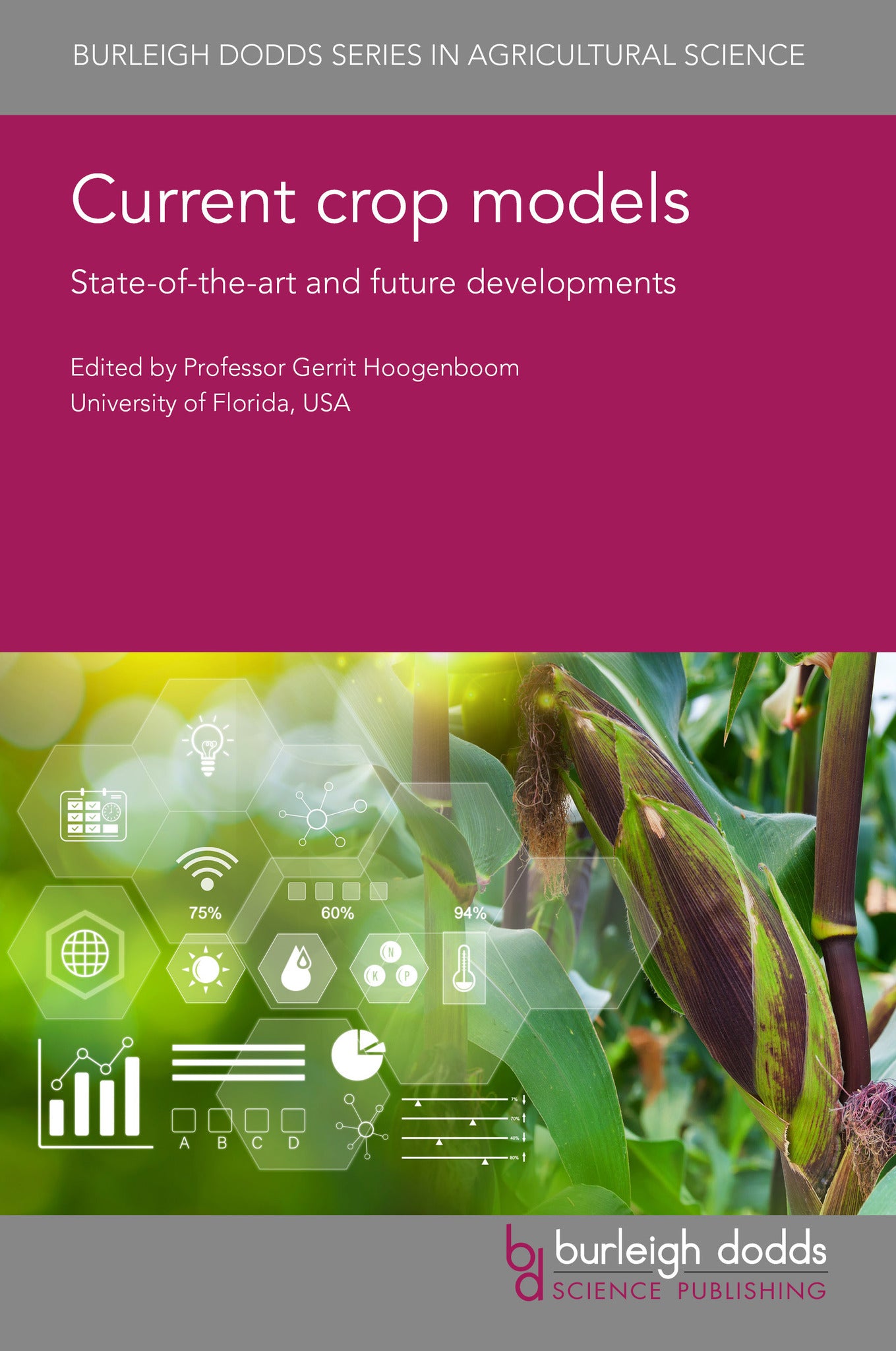We're sorry. An error has occurred
Please cancel or retry.
Current crop models

Whilst crop models have made significant progress in recent years, different models still diverge and struggle to predict the complex effects of genetic, environmental and management (G x E x M) variables in optimising crop production in the face of climate change.
Current crop models: State-of-the-art and future developments provides a comprehensive overview of the major crop models and the ways they address these challenges. The book explores the development of major crop models such as DSSAT, how variables such as crop variety and genetic differences are being addressed, recent model improvements and future model enhancements, as well as examples of current applications to improve crop production.
The book builds on a successful earlier volume published by Burleigh Dodds Science: Advances in crop modelling for a more sustainable agriculture (2019).

TECHNOLOGY & ENGINEERING / Agriculture / Agronomy / Crop Science, Agronomy and crop production, TECHNOLOGY & ENGINEERING / Agriculture / Sustainable Agriculture, Sustainable agriculture

Part 1 North America
- 1.The DSSAT crop model ecosystem: Ken Boote, Univeristy of Florida, USA;
- 2.The USDA-SIM crop model: David Fleisher, USDA-ARS, USA;
- 3.The Cycles crop model: Armen Kemanian, Penn State University, USA;
- 4.The SSM-Crop model: Tom Sinclair, North Carolina State University, USA;
- 5.The SALUS crop model: Bruno Basso, Michigan State University, USA;
- 6.The DNDC crop model: Bill Salas, Regrow Ag, USA;
- 7.The ALMANAC crop model: Jim Kiniry, USDA-ARS, USA;
- 8.The USDA Root Zone Water Quality Model (RZWQM): Liwang Ma, USDA-ARS, USA;
Part 2 Europe
- 9.The STICS crop model: Benjamin Dumont, University of Liege, Belgium;
- 10.The SARRA-H/SAMARA crop model: Myriam Adam, CIRAD, France;
- 11.The GECROS crop model: Xinyou Yin, Wageningen University, The Netherlands;
- 12.The WOFOST crop model: Allard de Wit, Wageningen University, The Netherlands;
- 13.The LINTUL crop model: Tom Schut, Wageningen University, The Netherlands;
- 14.The SWAP crop model: Iwan Supit, Wageningen University, The Netherlands;
- 15.The SIMPLACE crop and ecosystem management model: Frank Ewert, University of Bonn, Germany;
- 16.The MONICA and HERMES crop models: Claas Nendel, Leibniz Centre for Agricultural Landscape Research, Germany;
- 17.The AquaCrop model: Dirk Raes, Katholieke Universiteit Leuven, Belgium;
- 18.The Daisy crop model: Kiril Manevski, Aarhus University, Denmark;
Part 3 Asia and the Pacific
- 19.The InfoCrop model: Soora Naresh Kumar, Indian Agricultural Research Institute, India;
- 20.The CropGrow model: Yan Zhu, Nanjiang Agricultural University, China;




